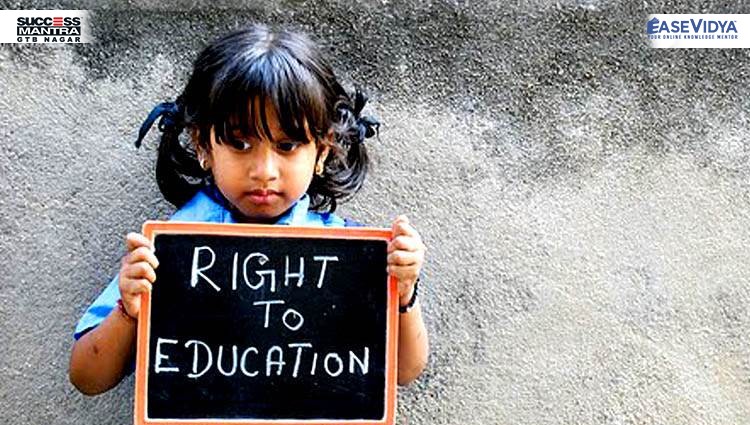
RIGHT TO EDUCATION
March 1, 2022
10 MINUTES
RIGHT TO EDUCATION
- The 86th Constitution Amendment Act added Article 21A affirming that every child between the age of 6 and 14 years has the right to free and compulsory education.
- The State shall ensure a school in every child’s neighbourhood. Every school shall conform to certain minimum standards defined in the Bill.
- Government schools shall provide free education to all admitted children. Private schools shall admit at least 25% of children from weaker sections; no fee shall be charged to these children. Screening tests at the time of admission and capitation fees are prohibited for all children.
- Government schools will be managed by School Management Committees (SMC), mostly composed of parents. Teachers will be assigned to a particular school; there will be no transfers.
- The National Commission for Elementary Education shall be constituted to monitor all aspects of elementary education including quality.
Right of Every Child
- Every child between the age of 6 and 14 years has the right to full-time free and compulsory education in a neighbourhood school
- Non-enrolled children of age group 7-9 years have the right to be admitted in an age-appropriate grade within one year of the commencement of the Act, and of age group 9-14 years have the right to be provided special programmes that will enable them to attend such grade within three years.
- Children with severe or profound disability, who are unable to attend a neighbourhood school, have the right to be provided education in an appropriate environment.
- A child cannot be held back in any grade or expelled from a school till Class VIII. Any expulsion requires an order of the School Management Committee (SMC), which will be given only after all other corrective measures have been exhausted, and parents/guardians have been heard. The local authority will take steps to enrol such a child in another neighbourhood school.
Analysis
- Some experts criticise the Bill for not implementing the ‘common school system’ whereas others believe that even the 25% free seats required of private schools is not justifiable.
- There is a concern that assigning teachers to a specific school will affect their chances of promotions and job security.
- The Bill needs to provide greater clarity regarding the rights of children with disabilities and how these will be implemented.
- There is mixed evidence on the ability of SMCs in improving the quality of schools and learning outcomes of children.
- This Bill will cost the exchequer between Rs 3,21,000 crore to Rs 4,36,000 crore over six years in addition to the current expenditure on education. This is estimated to be an increase of between 1.1% and 1.5% of GDP.
Way forward:
- The Government must insist on fixing teachers’ accountability in public schools and learning outcome-based recognition for all schools, be it public or private schools.
- Leveraging ICT to make education more interesting and easier to understand for the children. This will improve the quality as well as reduce the drop-out rates.
- Increase the public spending on education to 6% of GDP as recommended by many committees like the recent TSR Subramaniam committee.
- Improve the quality of teacher education by making teacher training mandatory. Example: National Council for Teacher Education Act amendment bill, Diksha portal to train teachers.
- Teachers are rarely reprimanded for non-performance, while there are recommendations for removal of non-detention policy. The blame is squarely on the children, such an attitude must be wiped out.
- Teachers’ efficiency will improve with administrative incentives, better pay and a systematic change in the professional development of this cohort.
- Education policy in India is focused on inputs rather than learning outcomes; It has a strong elitist bias in favour of higher education as opposed to primary or secondary education. This needs a change by coming out with a new policy.
Conclusion:
Despite the shortcomings in its implementation, the Right to Education Act remains a remarkable achievement. While concerns regarding the quality of education of the children remain, the Act offers a first step towards an educational system in India that provides access, equity and inclusion for all children. A quantum jump in the education sector is the need of the hour. The time is now to focus on the quality of education.












dqhytnb
Latest News on Education & LAW Exams Blogs | Success Mantra dqhytnb http://www.gc3993x0hw97y72uchllgip63q7363r1s.org/ [url=http://www.gc3993x0hw97y72uchllgip63q7363r1s.org/]udqhytnb[/url] <a href="http://www.gc3993x0hw97y72uchllgip63q7363r1s.org/">adqhytnb</a>